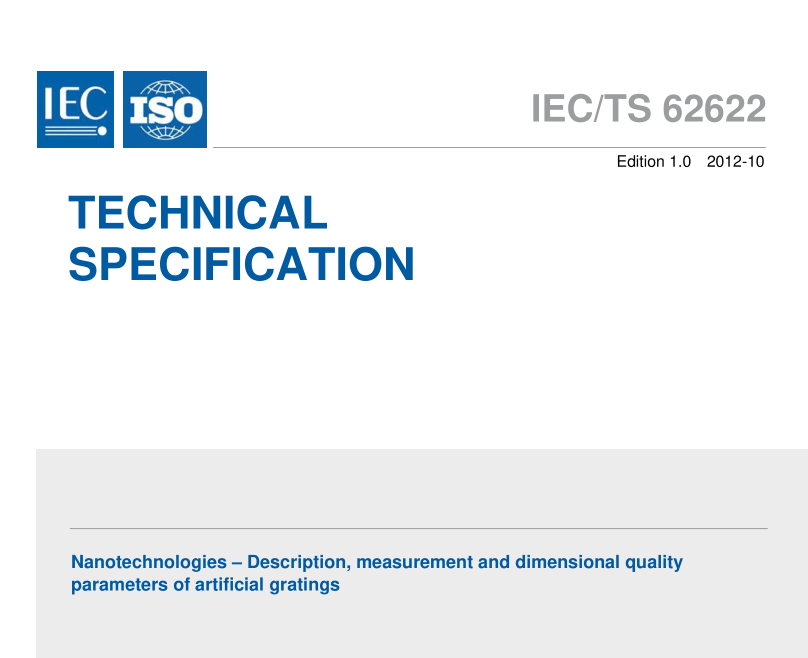IEC TS 62622:2012 pdfダウンロード

IEC TS 62622:2012 pdfダウンロード。Nanotechnologies – Description, measurement and dimensional quality parameters of artificial gratings
1 Scope
This technical specification specifies the generic terminology for the global and local quality parameters of artificial gratings, interpreted in terms of deviations from nominal positions of grating features, and provides guidance on the categorization of measurement and evaluation methods for their determination.
This specification is intended to facilitate communication among manufacturers, users and calibration laboratories dealing with the characterization of the dimensional quality parameters of artificial gratings used in nanotechnology.
This specification supports quality assurance in the production and use of artificial gratings in different areas of application in nanotechnology. Whilst the definitions and described methods are universal to a large variety of different gratings, the focus is on one-dimensional (1 D) and two-dimensional (2D) gratings.
2 Normative references
The following documents, in whole or in part, are normatively referenced in this document and are indispensable for its application. For dated references, only the edition cited applies. For undated references, the latest edition of the referenced document (including any amendments) applies.
ISO/IEC 1 7025, General requirements for the competence of testing and calibration laboratories
ISO/TS 80004-1 :201 0, Nanotechnologies – Vocabulary – Part 1: Core terms
3 Terms and definitions
For the purposes of this document, the following terms and definitions apply.
3.1 Basic terms
3.1 .1
feature
region within a single continuous boundary, and referred to a reference plane, that has a defining physical property (parameter) that is distinct from the region outside the boundary
EXAMPLE In Figure 1 a feature with a trapezoidal cross-section on a substrate is shown.
Note 1 to entry: This definition is adapted from [1 ] 1 (SEMI P35 (5.1 .5 feature (lithographic)).
Note 2 to entry: In general, a feature is a three-dimensional object. It can also be a nano-object (defined in ISO/TS 80004-1 :201 0, 2.5). It can have different shape, e.g. it can be a dot, a line, a groove, etc. It might be symmetric or non–symmetric. It can have the same material properties as the substrate or different ones. It can be located on the surface of a substrate or within the substrate (sometimes called “buried feature”).
Note 3 to entry: In [2] the term ‘geometrical feature’ is generally defined as point, line or surface.
3.1 .2
reference plane
user-defined plane approximating the surface of a substrate and containing a feature coordinate system
Note 1 to entry: This definition is adapted from [1 ].
3.1 .3
feature coordinate system
coordinate system
Cartesian coordinate system defined by the reference plane as x-y plane, the x-axis defined by the main grating direction and the origin defined by a suitable, specified reference position
Note 1 to entry: Often, the position of a particular feature is chosen as the origin of the coordinate system, e.g. the first feature in a 1 D grating, or the lower left feature in a 2D grating.
- Previous:IEC TS 62597:2011 pdfダウンロード
- Next:IEC TS 62743:2012 pdfダウンロード